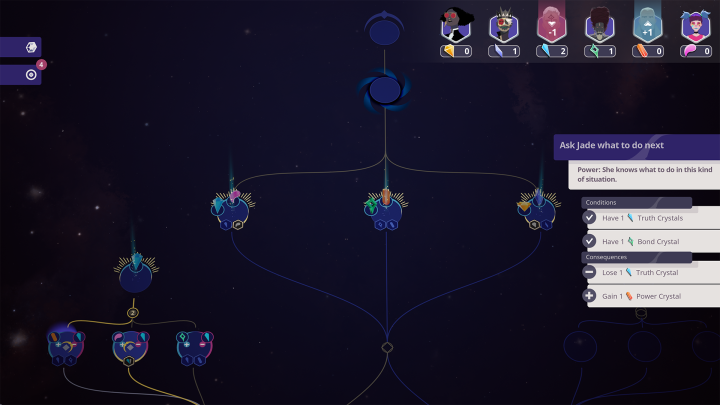Life is Strange developer Don’t Nod will launch its next narrative game this summer. Harmony: The Fall of Reverie launches on June 8 for PC and Nintendo Switch, and on June 22 for PlayStation 5 and Xbox Series X/S.
Harmony: The Fall of Reverie is a stylish visual novel that takes a more gamified approach to dialogue choices. The sci-fi title follows Polly, a woman who returns to her hometown in search of her missing mother. It’s a simple mystery premise that gets strange fast when Polly finds a mystical necklace that transports her to a sort of alternate universe called Reverie. There (where she’s known as Harmony), she gains the power of clairvoyance, allowing her to see how any choice she makes will impact her future.
Ahead of its release date reveal, Digital Trends played through the game’s first two chapters over a span of three hours. That hands-on time gave me a good sense of the game’s lore-filled world, where its mysterious story is headed, and how its unique choice system works. It can feel a bit dense at times, but Harmony: The Fall of Reverie is shaping up to be a richly detailed sci-fi story that gives visual novel fans a little more to do than usual.
A more interactive visual novel
Despite being a very different game tonally, Harmony has some key similarities to theLife is Strange series. It’s a very grounded story about a broken family, but one that’s placed into a supernatural context. During my demo, I’m quickly introduced to the inhabitants of Reverie, beings known as Aspirations of Humanity that embody concepts like chaos, truth, and bliss. Admittedly, there’s a lot of lore to take in at first. Not only am I bombarded with complicated worldbuilding within Reverie, but I’m also trying to unravel Polly’s own world and its inner politics. It can be dense and hard to follow at first glance, but I got a handle on it by Chapter 2.

The core gameplay hook here revolves around how Harmony makes choices during real-world conversations. As a clairvoyant, she can literally see all the different ways her actions will branch out into different story directions via a flowchart. It’s a bit like taking the invisible dialogue tree that lies underneath games like Pentiment and turning it into an interactable element. At any point, I can click on a node to see how it’ll change the story or what paths it’ll prevent me from following. That makes for a visual novel that gives a lot more power to the player, reducing the risk that they’ll run into an unsatisfying conclusion.
It isn’t as simple as just picking dialogue options on a tree, though. Certain nodes will reward players with currencies tied to each of the Aspirations and others can only be unlocked by having enough of them. If I want to follow the path of truth during a mission, I’ll need to pick dialogue options that grant me the most truth crystals. That feeds into what appears to be a final endgame, where your connection with each Aspiration is recorded on a chart that seems to impact the game’s ending. It’s a resource management balancing act that’s entirely unique for the genre and makes it feel more interactive than a standard visual novel.

I appreciate that idea, though it’s a little confusing at times. During some points, I’m allowed to seemingly go backwards on the flowchart, returning to paths I thought I had moved past. I also ran into moments where complicated unlock conditions for certain nodes left me confused about what options I could choose next or why I was locked out of some. I’ll need to spend more time with it to fully get the nuances of its choice systems.
Even with a learning curve (both in mechanics and story), Harmony: The Fall of Reverie is looking like a meaty visual novel for fans of the genre, one that goes above and beyond the usual format. And it does that while delivering a vibrant art style and slick animations that make it look like an anime. I’m curious to learn more about all its eccentric Aspirations, as well as the nefarious corporate entity that may play a huge role in the mystery. We’ll see where all those threads lead when Harmony: The Fall of Reverie launches this June.
Editors' Recommendations
- The Nintendo Switch just got 2 surprise games — and they’re both worth grabbing
- Lorelei and the Laser Eyes could be one of 2024’s best and boldest games
- This $15 Steam game is a must-buy for Zelda fans
- What’s new in April 2024: 8 upcoming games to keep on your radar
- This upcoming PC game brings Lego building to the real-time strategy genre




